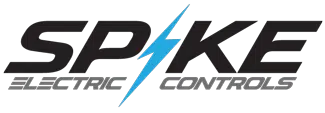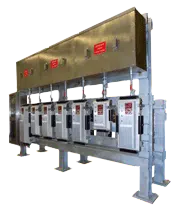ATEX and Explosive Atmospheres Explained
 Flammable gases, vapors, mists, or combustible clouds of dust can cause explosive atmospheres. However, if any of these substances are mixed in the air, all it needs is a small ignition source to cause an explosion.
Flammable gases, vapors, mists, or combustible clouds of dust can cause explosive atmospheres. However, if any of these substances are mixed in the air, all it needs is a small ignition source to cause an explosion.
Explosions are a serious threat to life and they can cause death or serious injury. Therefore, it is important to prevent the release of dangerous substances that cause explosive atmospheres. However, preventing ignition sources is useful to reduce the risk. It is recommended to use the right equipment to avoid any accident.
DSEAR “Dangerous Substances and Explosive Atmospheres Regulations 2002” has placed employers’ duties for eliminating or controlling the risks of explosive atmospheres in the workplace. Below there is a summary of the requirements.
What is an Explosive Atmosphere?
According to DSEAR, an explosive atmosphere is known as a mixture of different dangerous substances contained in the air. These substances are in the form of vapors, gases, dust, or mist. After ignition occurs, combustion can spread the unburned mixture.
Atmospheric conditions are usually known as ambient pressures and temperatures. Temperature can be around –20°C to 40°C, and pressures can be around 0.8 to 1.1 bar.
What is ATEX?
ATEX is a term used for the two European Directives used for controlling explosive atmospheres:
- ATEX 137 is also known as Directive 99/92/EC. It is used for minimum requirements used to improve workers’ health and safety protection where risks of explosive atmospheres are higher. The text of this Directive and the guidelines produced by the EU can be found on the EUwebsite.
- ATEX 95 or Directive 94/9/EC is about the approximation of the laws of Members States concerning protective and equipment systems that are intended to be used in potentially explosive atmospheres. The text for this directive and guidelines are available on the EUwebsite.
Explosive Atmospheres Exemptions
Activities performed in different workplaces can produce potentially explosive atmospheres. Examples can be the places where work activities cause or release vapors or flammable gasses like vehicle paint spraying or workplaces where workers deal with fine organic dusts like wood or grain flour.
The requirements mentioned in the DSEAR are applicable to most of the workplaces where there is a chance of an explosive atmosphere. However, some work activities and industry sectors are exempt. These exemptions can be found in regulation 3 of DSEAR.
Classification of Areas Where Explosive Atmospheres Can Occur
DSEAR requires employers to control or eliminate the risks that can be caused by dangerous substances. Further information about these requirements is available on the DSEAR page. Additionally, the regulations apply the following detailed duties for the employers in the workplaces where explosive atmospheres can occur.
Employers will need to classify the areas having a hazardous explosive atmosphere that can occur into zones. The classification can be assigned to a workplace according to its size and location. It will be dependent on the likelihood of an explosive atmosphere occurring and its perseverance if needed. Schedule 2 of DSEAR includes describing different classifications of the zone for vapors, gases, and dust.
| European & IECEX classification | Definition of zone or division | North American classification |
| Zone 0 (gases) | An area in which an explosive mixture is continuously present or present for long periods | Class I Division 1 (gases) |
| Zone 20 (dusts) | Class II Division 1 (dusts) | |
| Zone 1 (gases) | An area in which an explosive mixture is likely to occur in normal operation | Class I Division 1 (gases) |
| Zone 21 (dusts) | Class II Division 1 (dusts) | |
| Zone 2 (gases) | An area in which an explosive mixture is not likely to occur in normal operation and if it occurs it will exist only for a short time | Class I Division 2 (gases) |
| Zone 22 (dusts) | Class II Division 2 (dusts) |
Further information about the guidance on the classification of zones where potentially explosive atmospheres can occur and selecting the right equipment to use in those areas:
Selection of Protective Systems and Equipment
Areas that are listed in the zone should be protected from ignition sources. In addition, protective systems and equipment should be used to fulfill the requirements of Protective Systems and Equipment intended for use in potentially explosive atmosphere regulations 1996.
However, equipment that is already being used before July 2003 can be used indefinitely by providing a risk assessment that shows the safety of equipment to be used.
Identification of Areas Where Explosive Atmospheres Can Occur
The entry points for the areas that are classified as zones should be marked with a specific “EX” sign. See the table below:
* There are multiple methods of protection, for simplicity we have listed the 3 most commonly used.
Providing Anti-Static Clothing
Employers should provide their workers who are working in zoned areas with the proper clothing that will not create the risk of an electrostatic discharge that can ignite the explosive atmosphere. The clothing provided by the employers will be dependent on the risk identification in the risk assessment.
Verifying Overall Explosion Safety
Before starting work on a workplace having zoned areas, the employer will need to ensure the overall safety measures for an explosion that are confirmed to be safe. This needs to be done by a competent organization or person to consider the particular risks present at a workplace. However, the capabilities of explosion control and other measures should be available.
Protective Systems and Equipment Used for Explosive Atmospheres
The purpose of Directive 94/9/EC is about allowing free trade for protective systems and ATEX equipment within the EU in order to remove the need for any separate documentation and testing for each Member State. In Great Britain, these Directive requirements were implemented with the help of BIS Equipment and Protective Systems to be used in Potentially Explosive Atmospheres Regulations 1996. These regulations are applicable to all the equipment being used in explosive atmospheres. The workplace can be mechanical or electrical.
Manufacturers or suppliers outside the EU need to ensure that they are providing the equipment that meets the specific requirements of health and safety. Therefore, they will need to undergo appropriate conformity procedures. Usually, it involves certification and testing through a third-party certification body. However, suppliers/manufacturers can self-certify their equipment that can be used in hazardous explosive atmospheres. The equipment will be marked by the “EX” symbol once it is certified. This mark can be helpful to identify certified equipment. Certification can be helpful to ensure that the protective system or equipment is suitable to be used for the intended purpose and that adequate information is provided with the equipment to ensure that it can be used safely.
Want to buy electric equipment for industrial or domestic purpose? Contact Spike Electric and buy the best electric products. We offer safe, reliable and efficient energy solutions.
Written by: Cole Attaway
Cole Attaway is the founder and CEO of Spike Electric Controls. Spike's mission is to improve the accessibility and delivery of industrial electrical gear for clients nationwide. Spike solutions result in reduced unplanned downtime, less overtime, and greater operational efficiencies.


